Matsutake gohan should only be paired with an osuimono for two reasons: 1) They are both fancy foods and 2) you don’t want a strong miso soup flavor to overpower the matsutake.
I was inspired by a recipe I found on Cookpad (Mammaru Tamagodofu no osuimono), although I found it to be too salty so I altered it for my taste. This recipe is a little on the sweeter side as far as osuimono recipes go so if you want it to be traditional, follow the seasoning for my osumashi recipe. I also used kaiware daikon (one of my favorite ingredients for salads) as a garnish. The egg ends up light almost like chawan mushi and goes perfectly with this build-a-meal.
Egg Ingredients (servings 2)
2 eggs
100 ml of dashijiru
slightly less than 1/4 tsp. kosher salt (less if using iodized)
1 tsp. sugar
1/4 tsp. soy sauce
1 tbsp. dried cut wakame (1 tbsp. per bowl of reconstituted wakame finely chopped)
Soup Ingredients (servings 2)
200 ml of dashijiru
slightly less than 1/4 tsp. kosher salt
1/4 tsp. soy sauce
1 tsp. sugar
Garnish
1) Carrot flowers
2) Lemon zest (See Osumashi on how to prepare zest)
3) kaiware daikon
Directions
1) Make the dashijiru and divide it up into 100 ml and 200 ml. Make sure that the 100 ml for the egg is cool before adding the egg so it doesn’t cook it. I prefer to let the dashijiru cool before squeezing out the katsuobushi but if you don’t have time, let it cool in an ice bath. 100 ml will cool very quickly.
2) Add the egg, dashijiru, salt, soy sauce and sugar and mix lightly, being careful not to create bubbles.
3) Pass it through cheese cloth or a sieve to get a smooth and even consistency. This will prevent white splotches on the egg.
4) Line a bowl with plastic wrap and add half of the egg mixture to each bowl.
5) Add 1 tbsp. of the reconstituted wakame to each bowl. Even if you buy chopped wakame, it should be chopped up more so that the wakame doesn’t cover the surface of the egg and looks like confetti.
6) Use a rubber band and tie up the end.
7) Place the bowls in a steamer and steam on high for 5 minutes. Turn off the stove and keep covered for an additional 10 minutes.
8) While the egg is steaming, add the dashijiru, salt, soy sauce, sugar, carrot decorations and lemon zest (optional) to a pot and simmer. The carrots should be firm and not mushy.
9) Once the eggs are done, snip off the tied end and pull the plastic out. Use a small plate to cover the bowl and flip it over. Slide the egg (round side up) into a soup bowl.
10) Pour the soup over the egg and garnish with kaiware daikon and carrot flowers.
Strain the egg using a cheese cloth. It’s so much faster than a sieve.
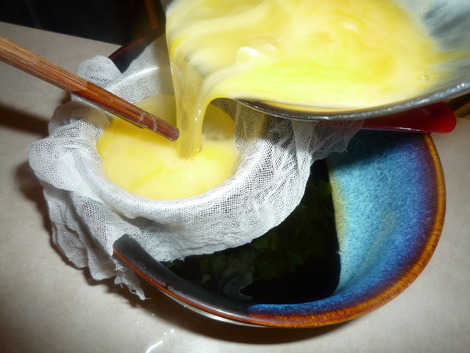
Add the wakame to the egg-dashijiru mixture. (I used these rice bowls at first and then changed my mind and used the white bowls because they were smaller.)
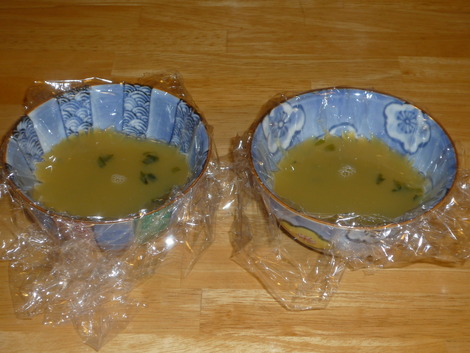
Tie the ends with a rubber band.
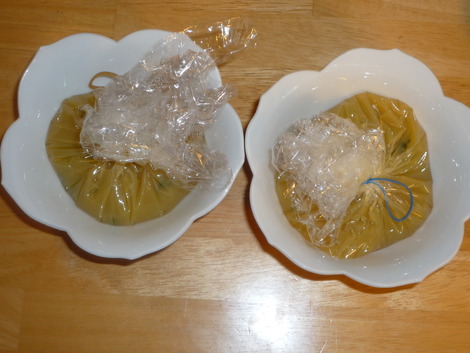
Steam them on high for 5 minutes covered and let rest covered for 10 minutes.
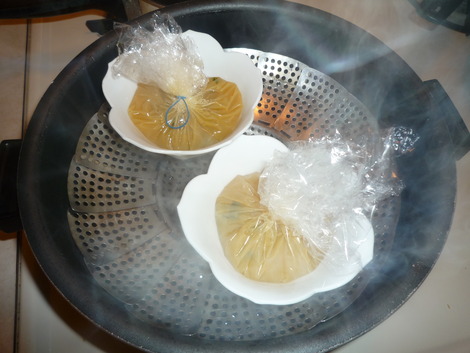
Prepare the soup and add the carrots and simmer on low until carrots are done but still firm. Add lemon zest and turn off the stove.
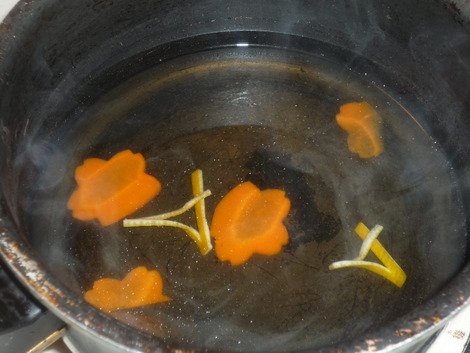
This soup is too much work to make for just one.
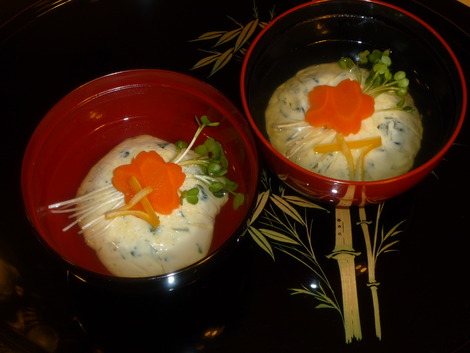
It’s almost too beautiful to eat. This photo doesn’t do it justice. I want to take a photography class!
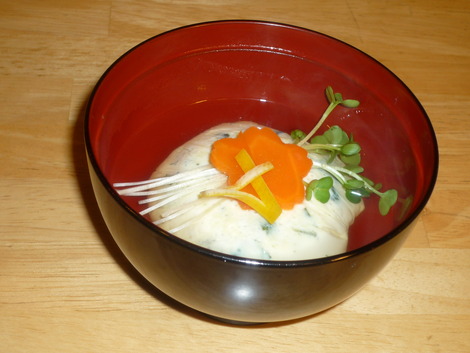

Naomi Kuwabara was born and raised in California but spent many summers in Japan growing up. She has spent time living in Hokkaido and Osaka, both meccas for Japanese cuisine. Her passion is cooking and sharing her experiences cooking Japanese food with others. Her blog Umamitopia is about her experiences cooking Japanese food. Her greatest inspirations are from her mother and grandmother. Her cooking adventures can be found at http://umamitopia.com.








